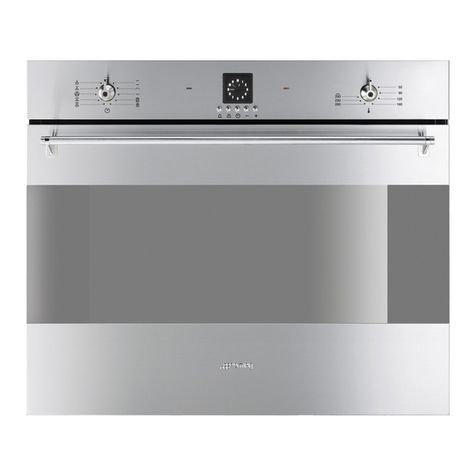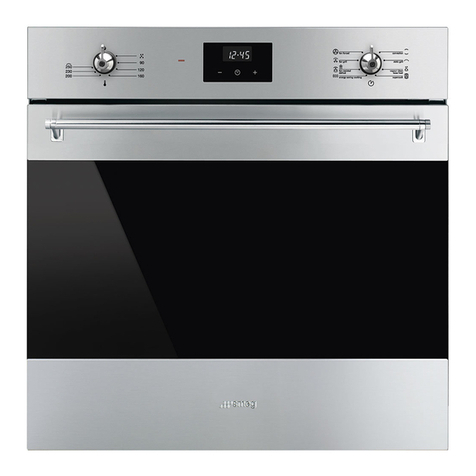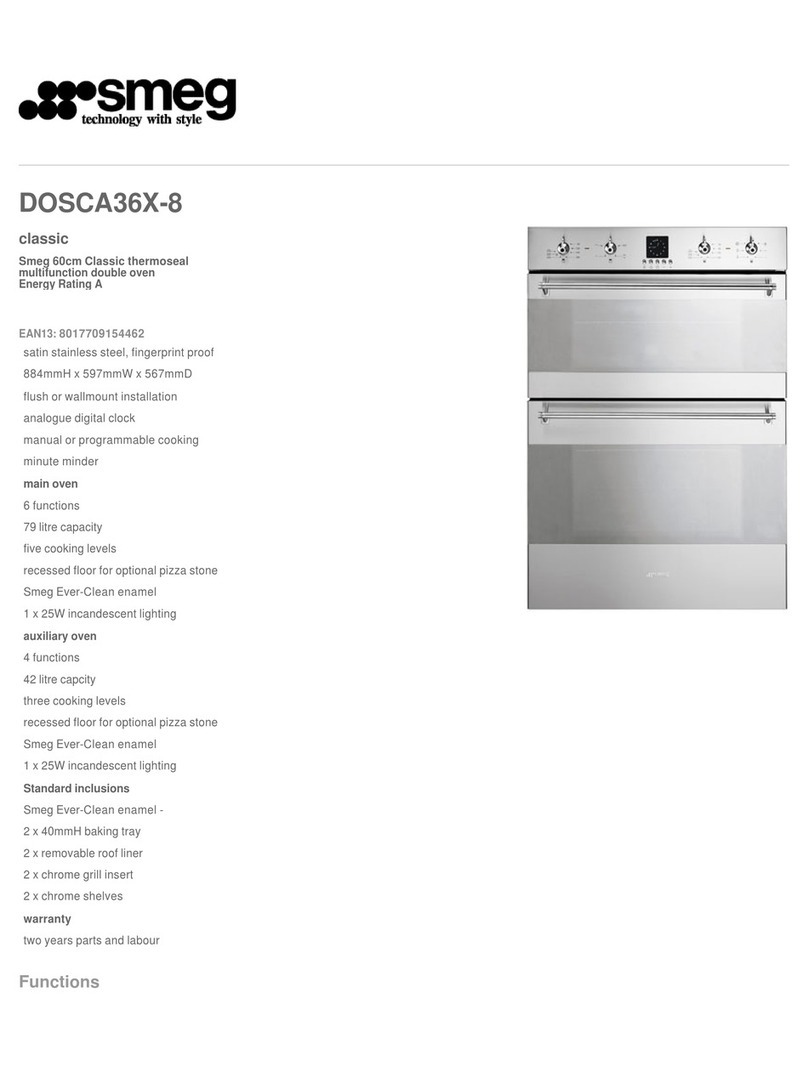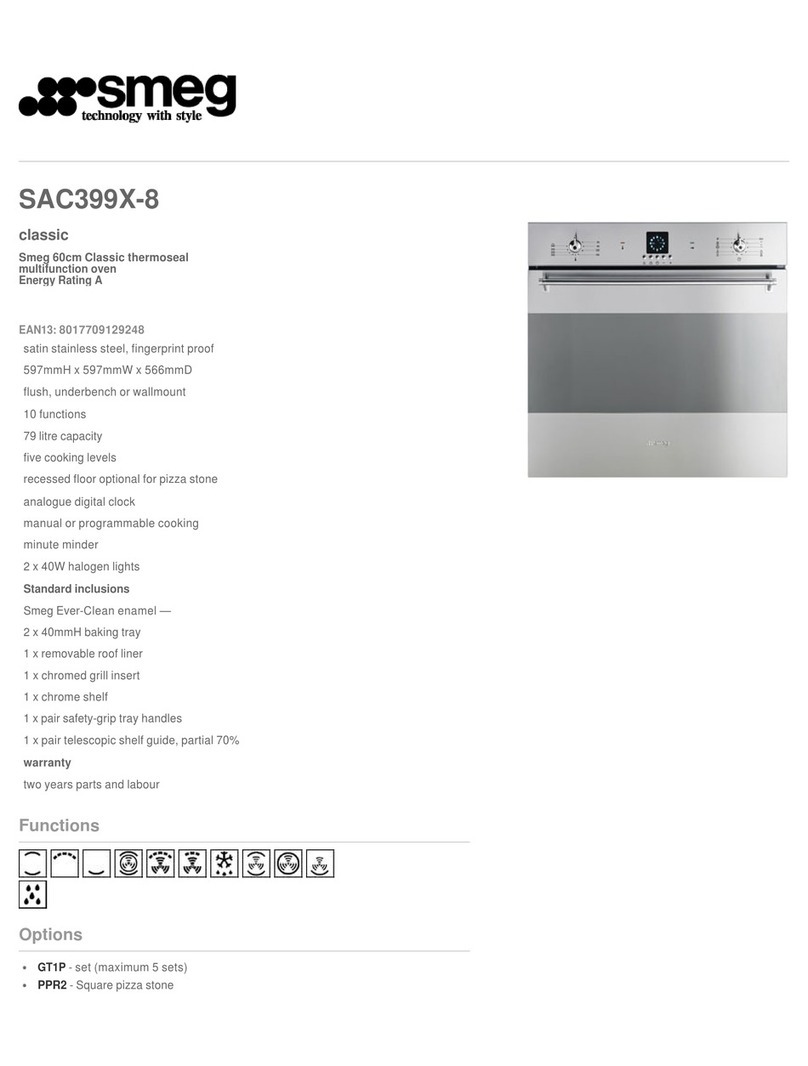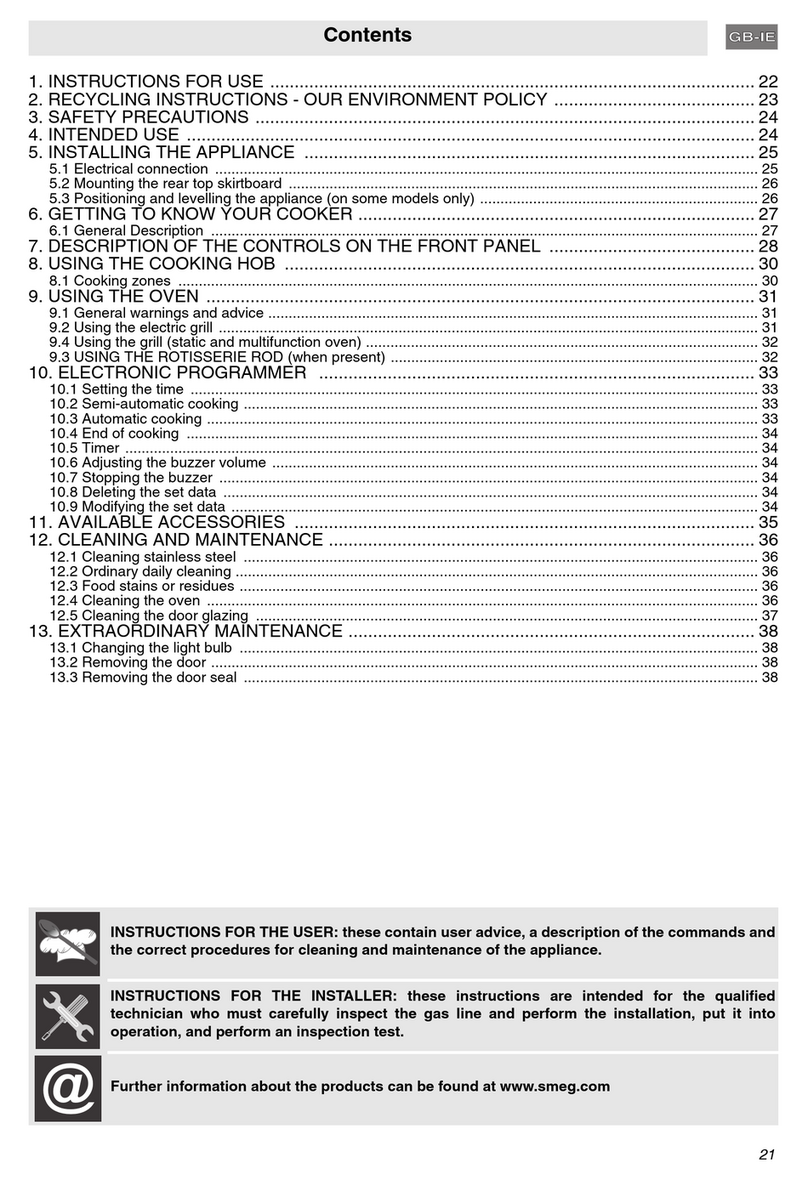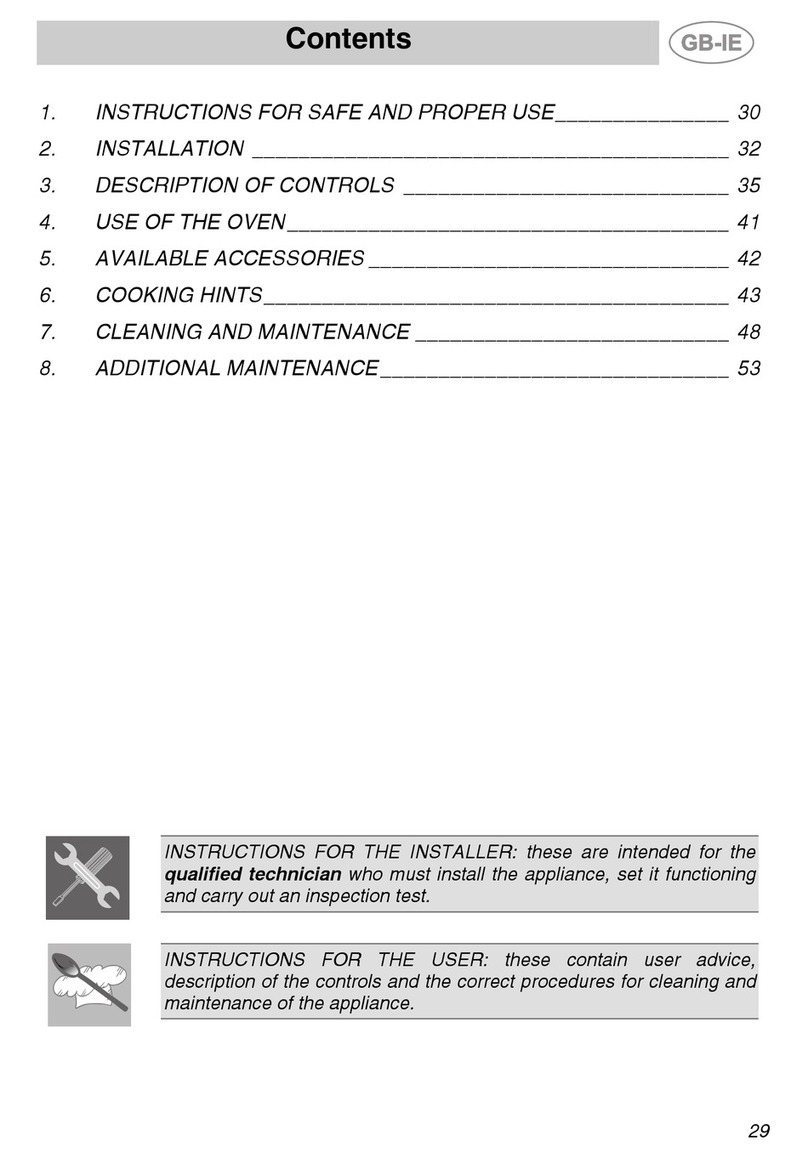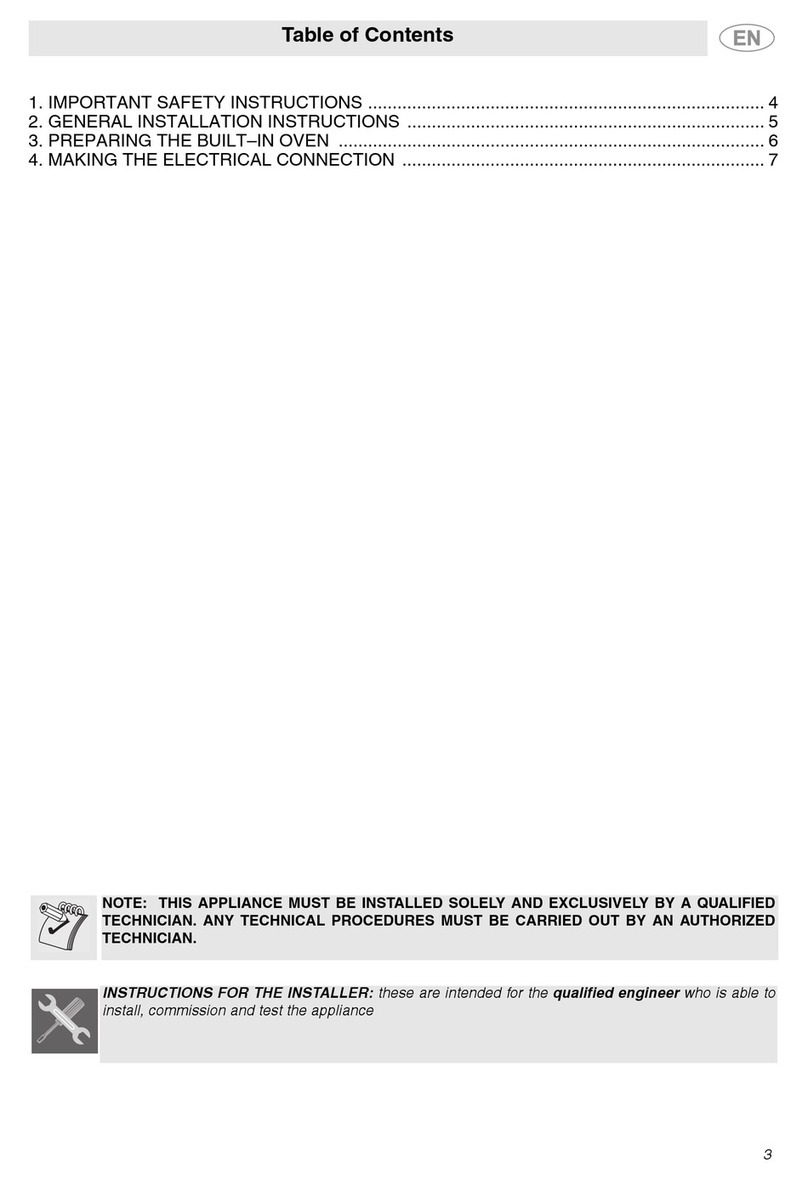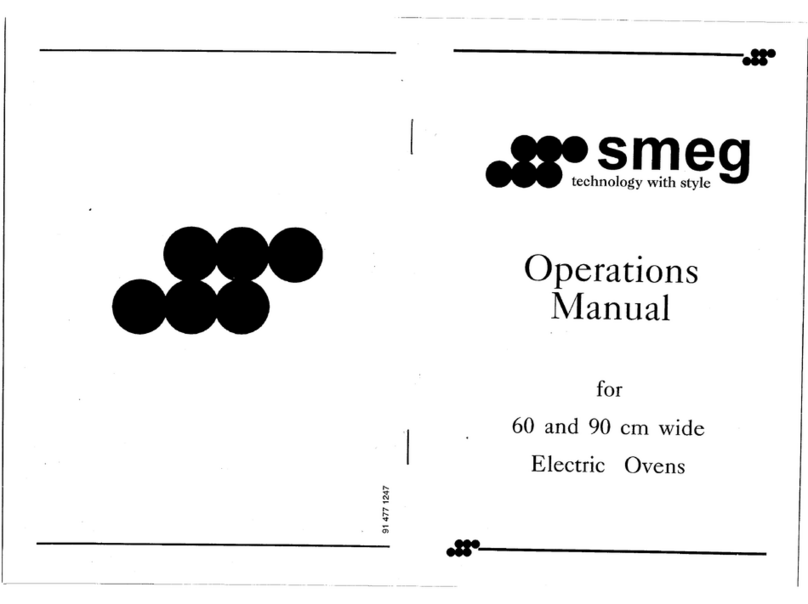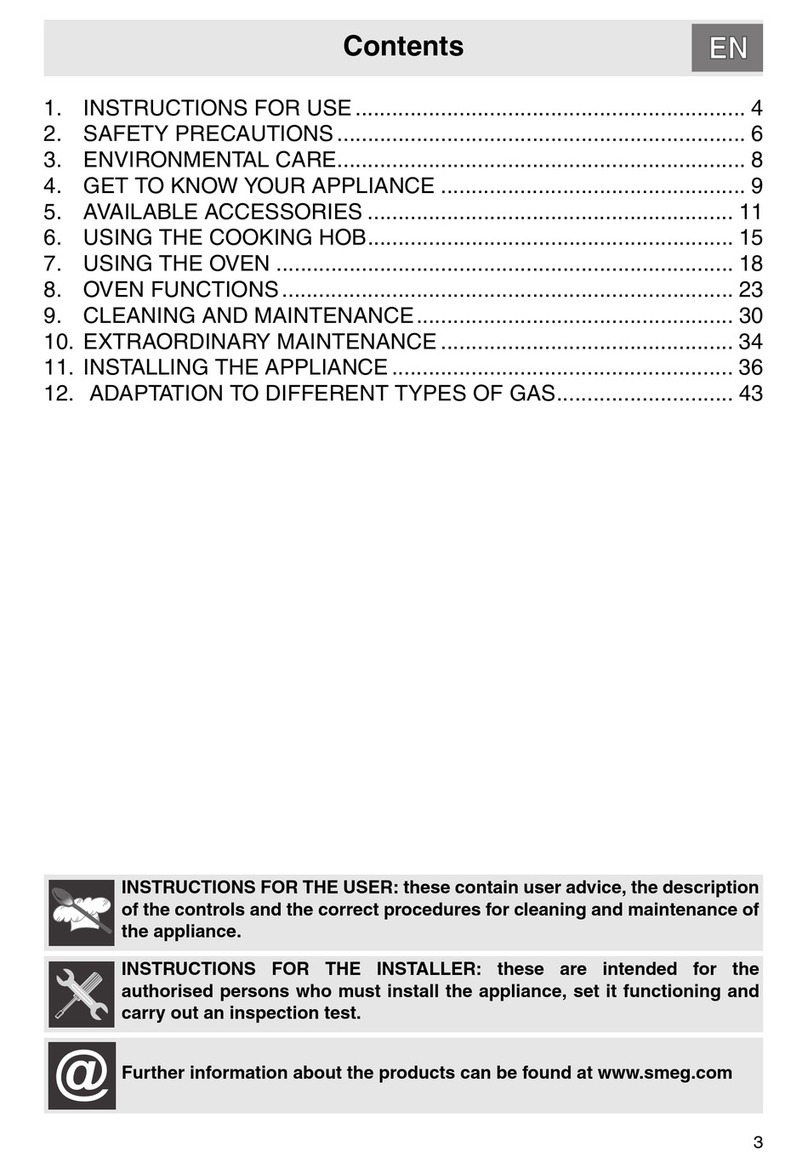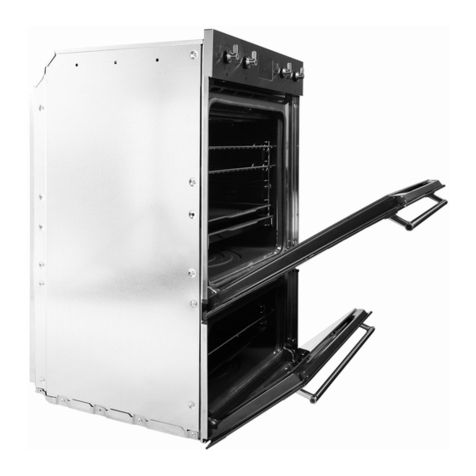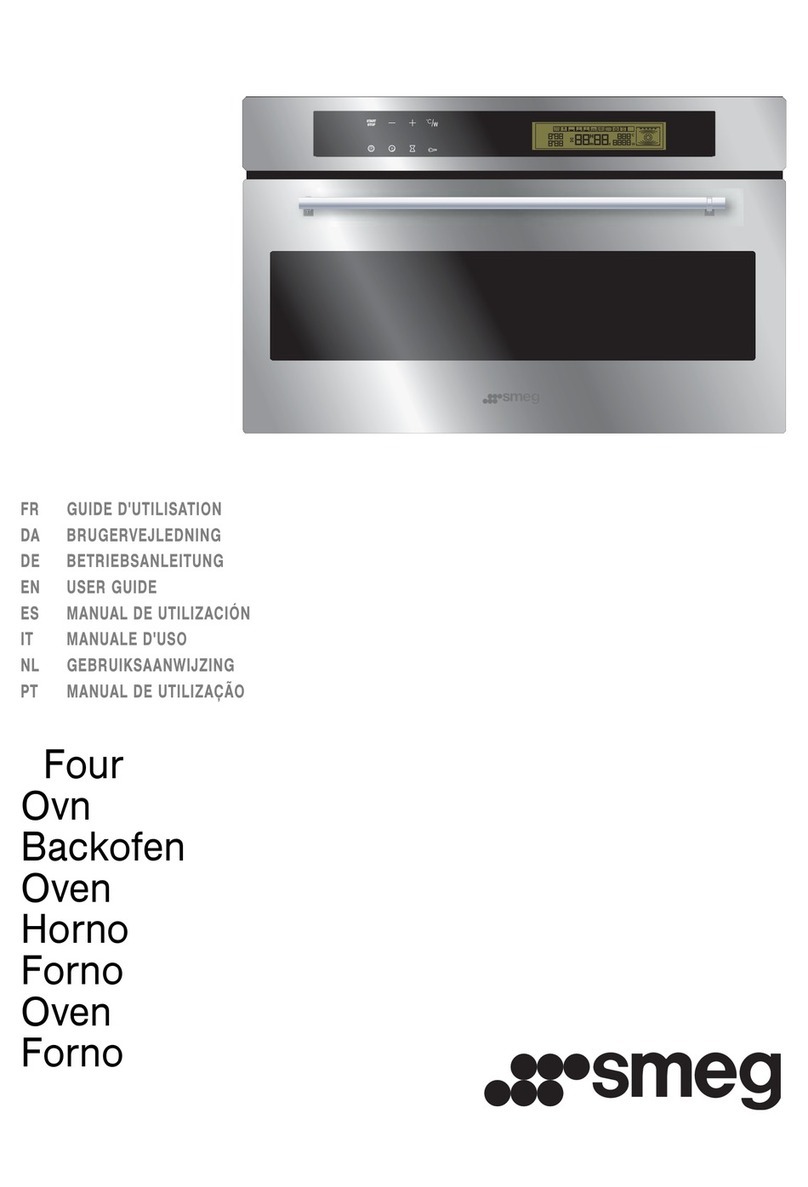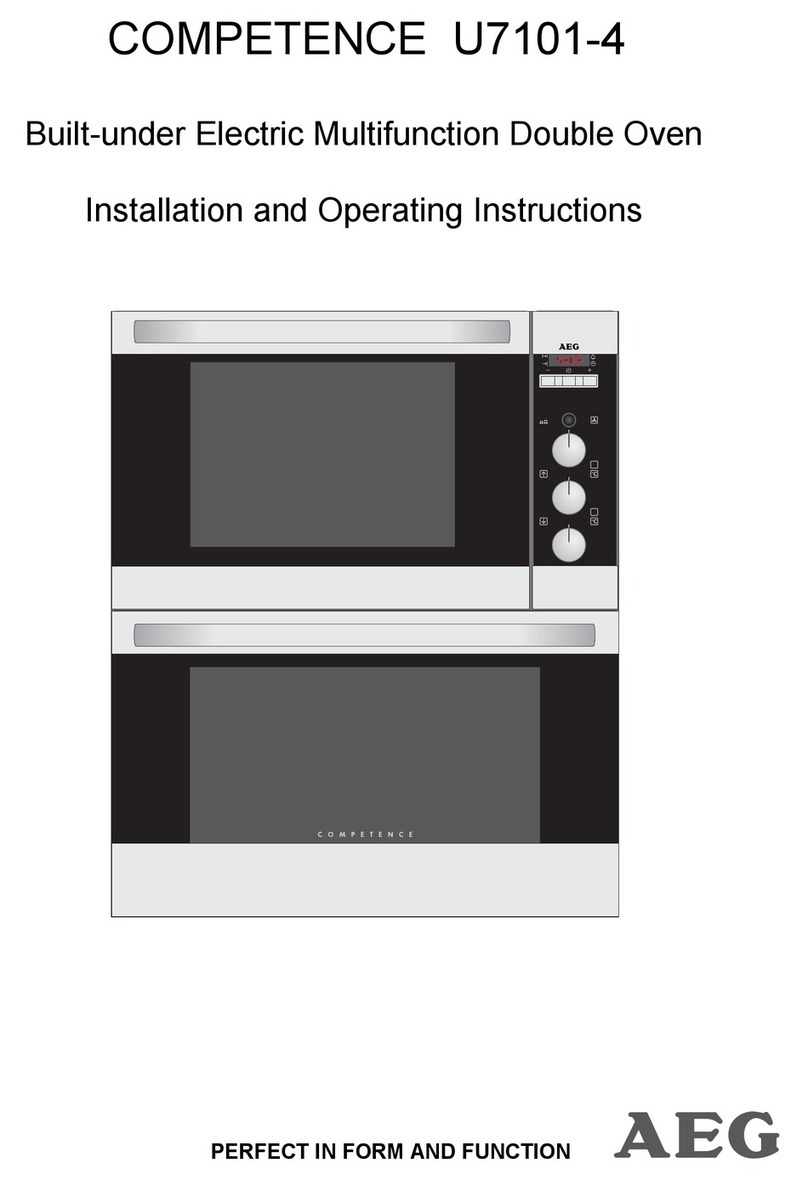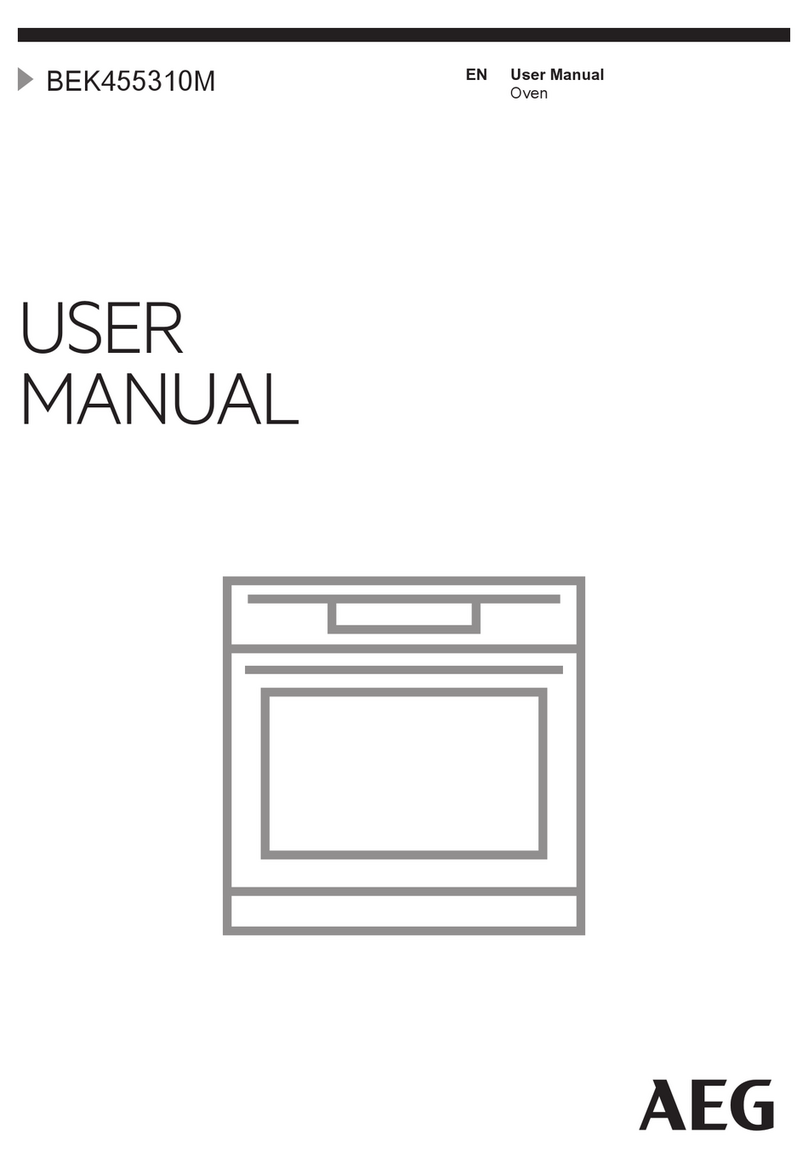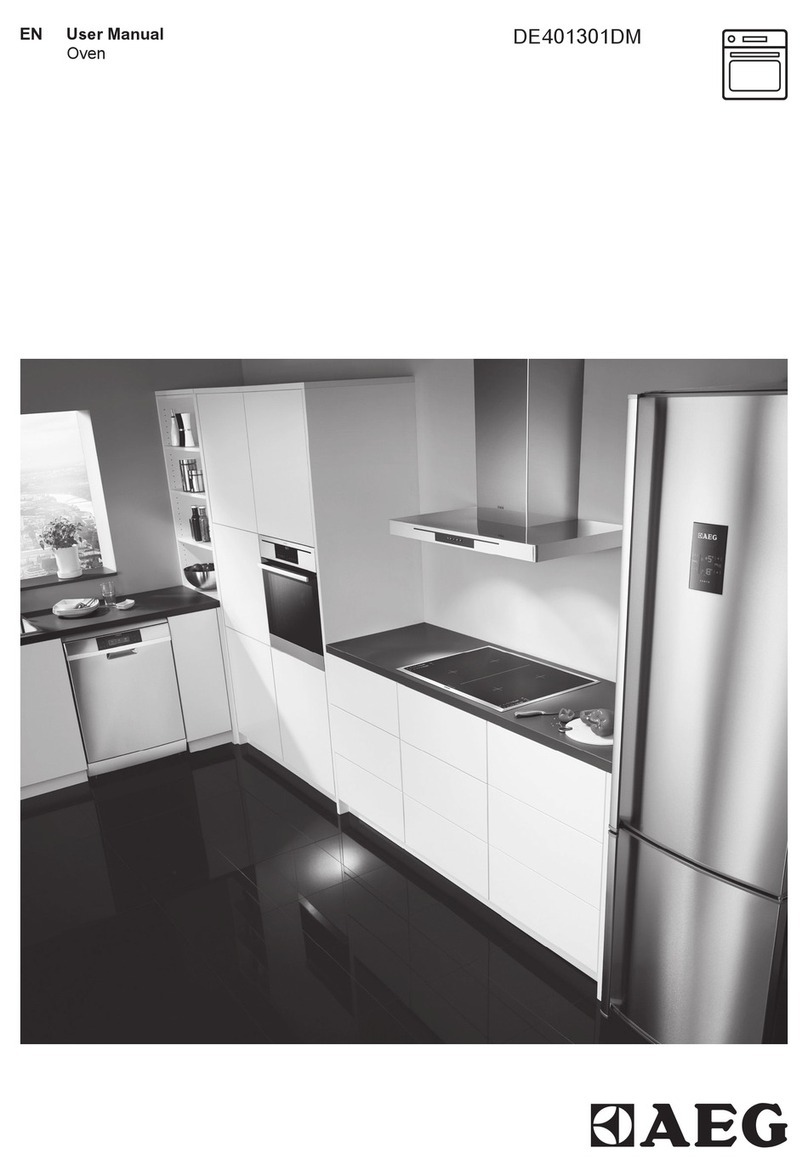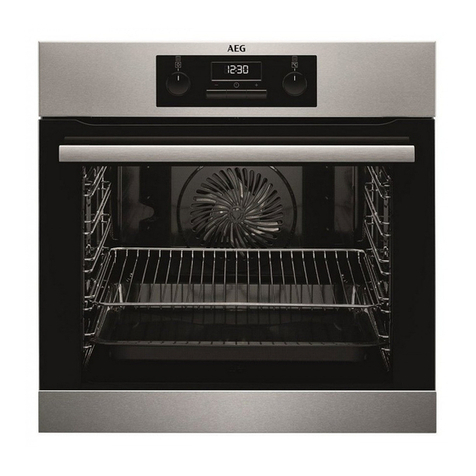
Instructions
51
EN
• Do not use rough or abrasive
materials or sharp metal scrapers.
• Do not use cleaning products
containing chlorine, ammonia or
bleach on parts made of steel or
that have metallic surface finishes
(e.g. anodizing, nickel- or
chromium-plating).
• Do not use abrasive or corrosive
detergents (e.g. scouring
powders, stain removers and
metallic sponges) on glass parts.
• Do not wash the removable
components such as the hob
grids, flame-spreader crowns and
burner caps in a dishwasher.
• Never use the oven door to lever
the appliance into place when
fitting.
• Avoid exerting too much pressure
on the door when open.
• Do not use the handle to lift or
move this appliance.
Installation
• THIS APPLIANCE MUST NOT BE
INSTALLED IN A BOAT OR
CARAVAN.
• The appliance must not be
installed on a pedestal.
• Position the appliance into the
cabinet cut-out with the help of a
second person.
• To prevent any possible
overheating, the appliance should
not be installed behind a
decoration door or a panel.
• Have the electrical connection
performed by authorised
technicians.
• The appliance must be connected
to ground in compliance with
electrical system safety standards.
• Use cables withstanding a
temperature of at least 90 °C.
• The tightening torque of the
screws of the terminal board
leads must be 1.5 - 2 Nm.
For this appliance
• After use, turn off the plates.
Never rely solely on the
cookware detector.
• Supervise children carefully as
they cannot readily see the
indication of residual heat. After
use the cooking zones remain hot
for a certain period of time even if
they have been turned off. Keep
children away from the cooking
zones.
• The glass ceramic surface is
highly resistant to impacts.
However, avoid hard, solid
objects falling on the cooking
surface as they may cause it to
break if they are sharp.


